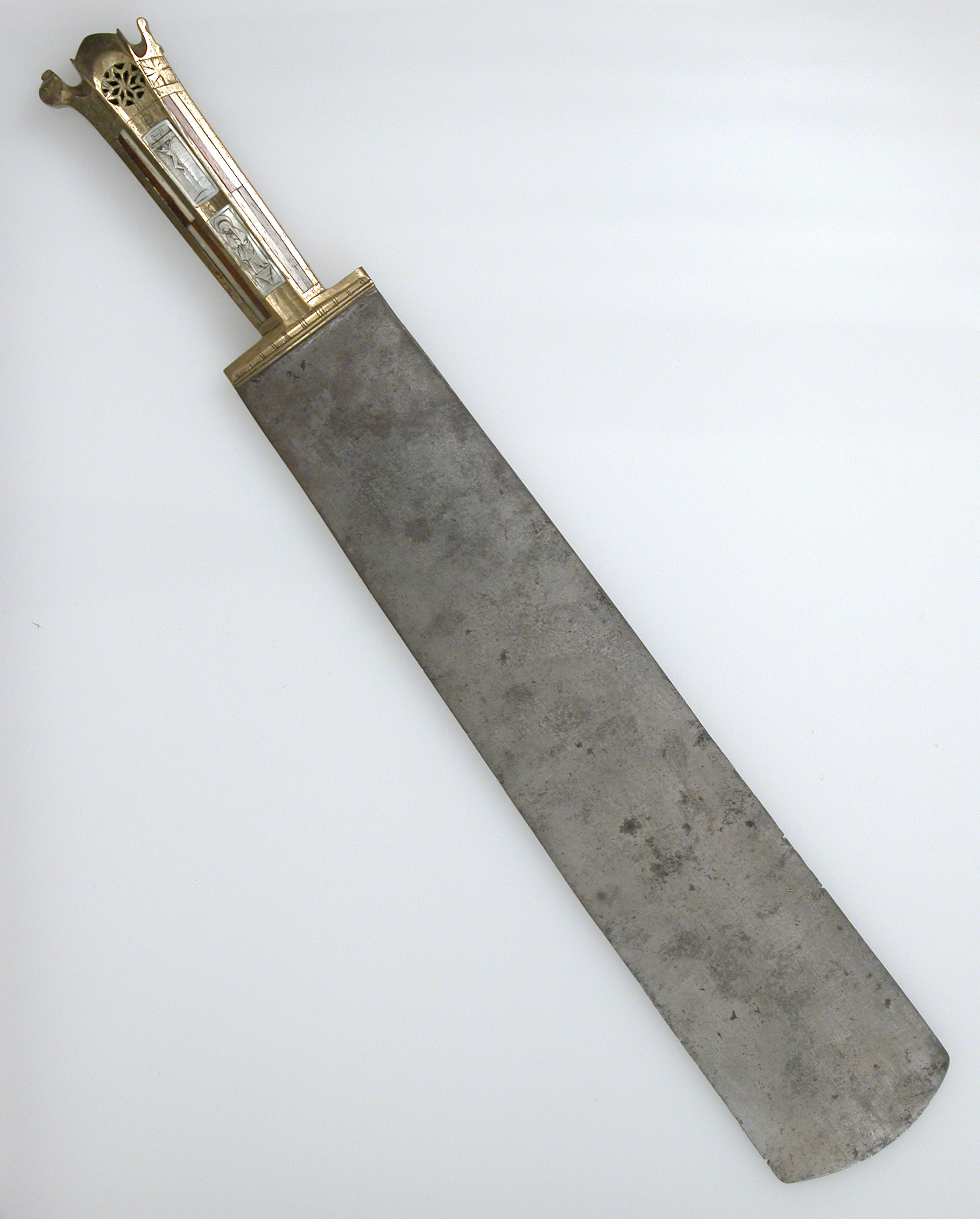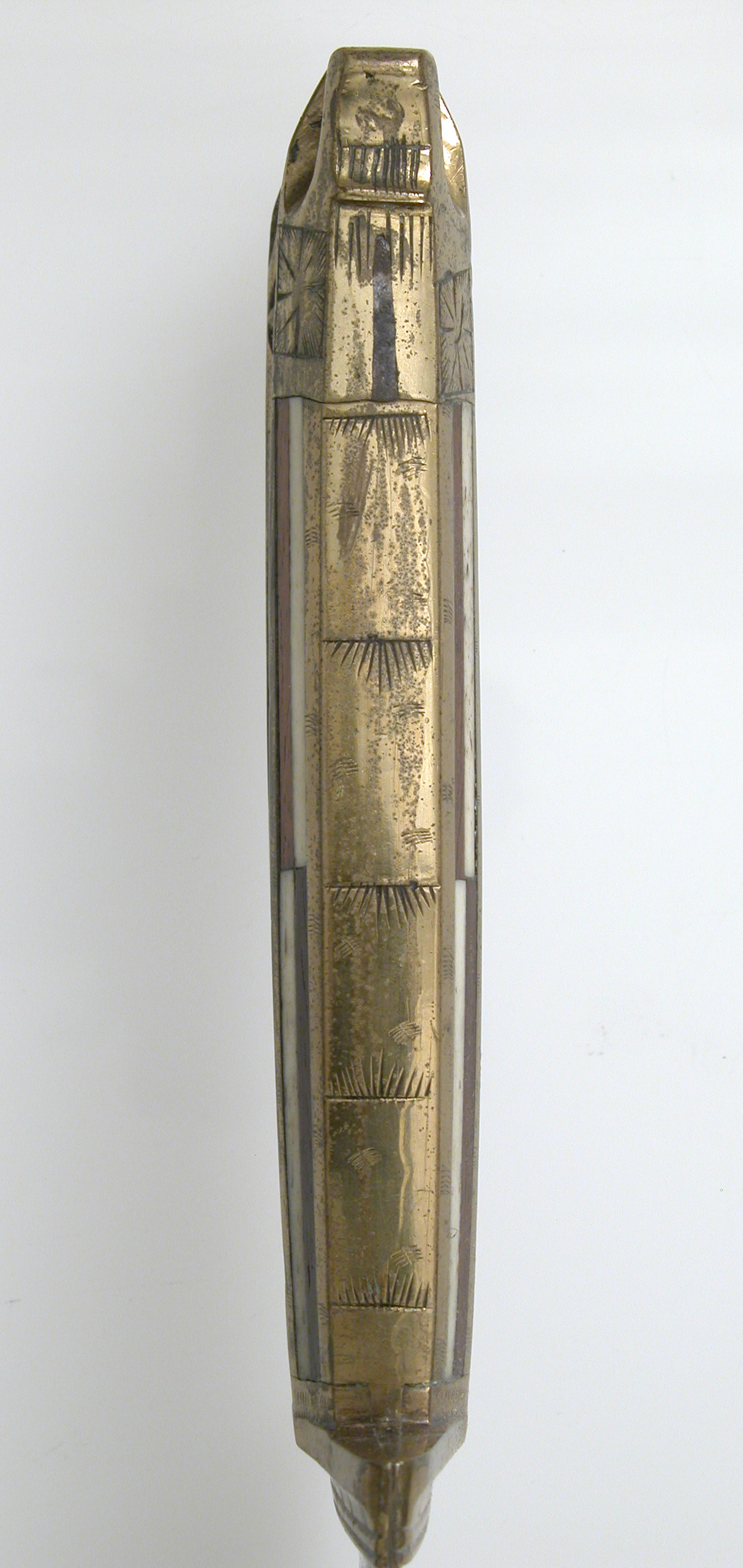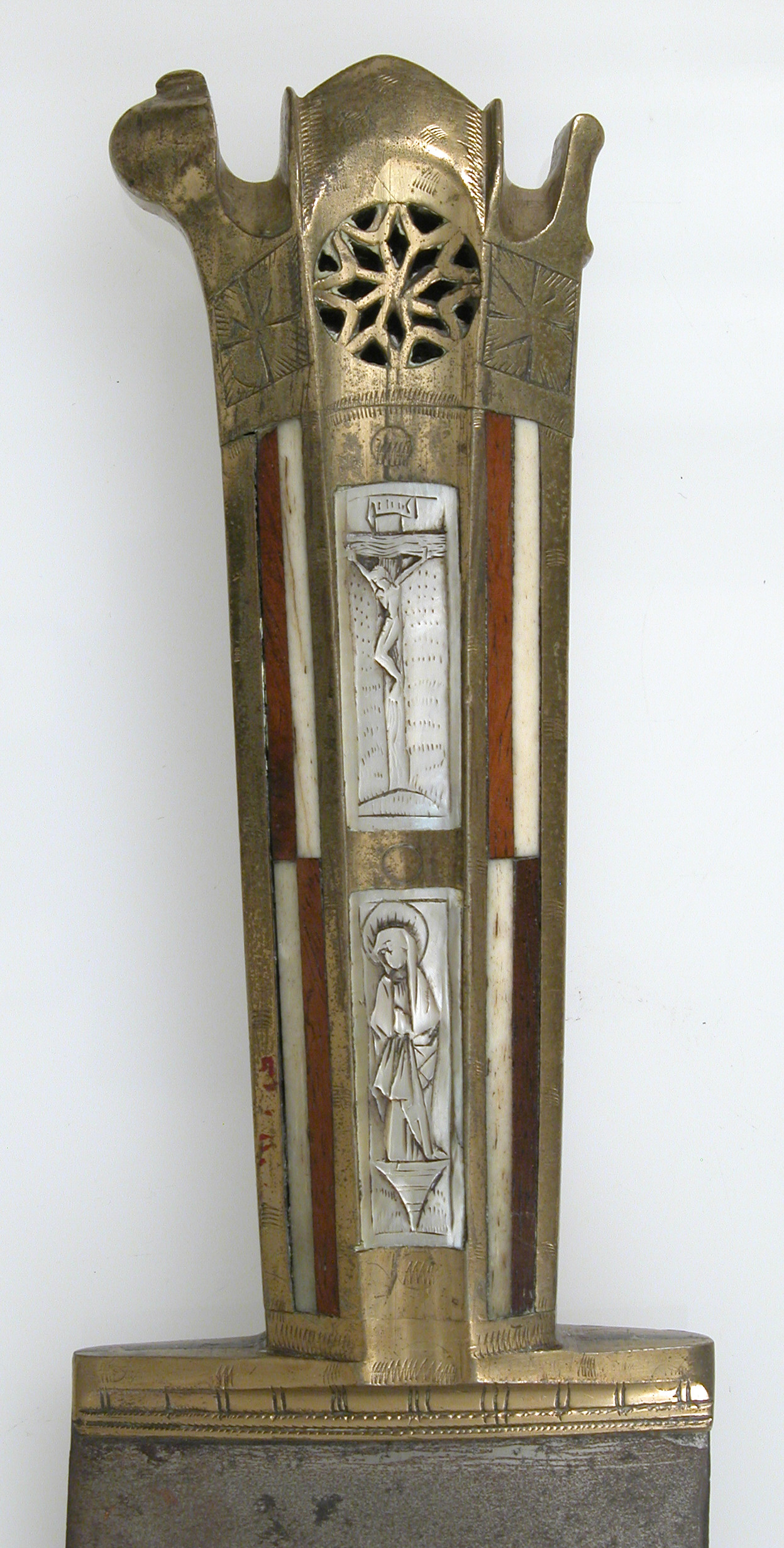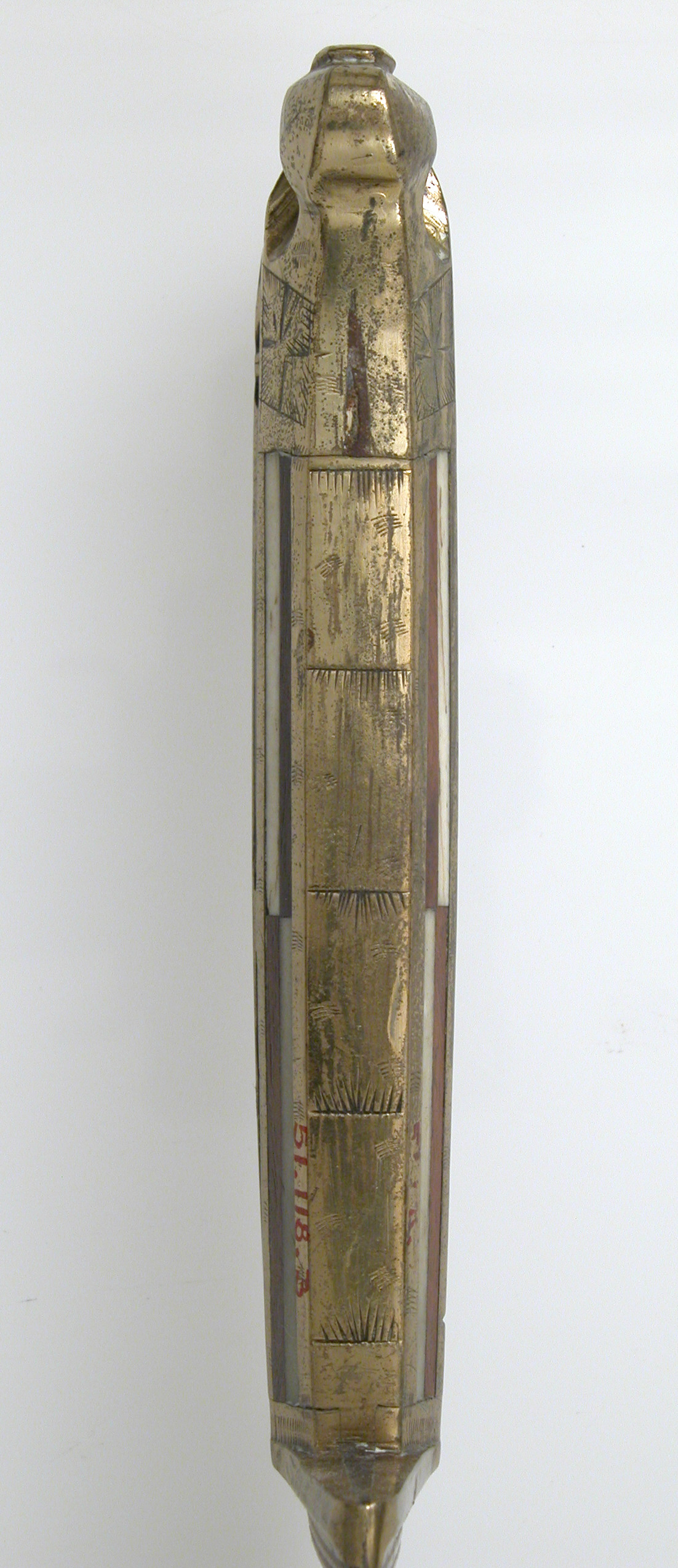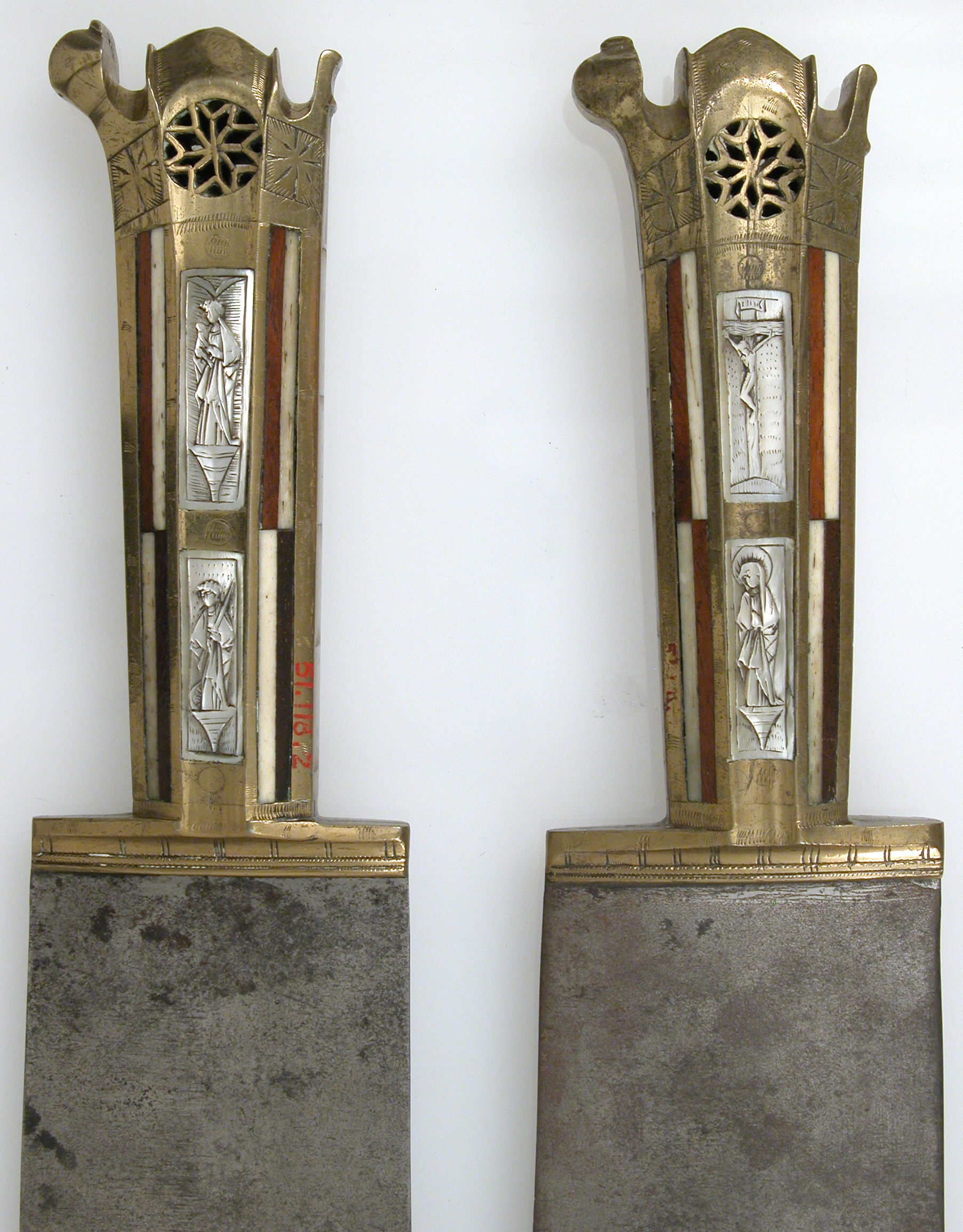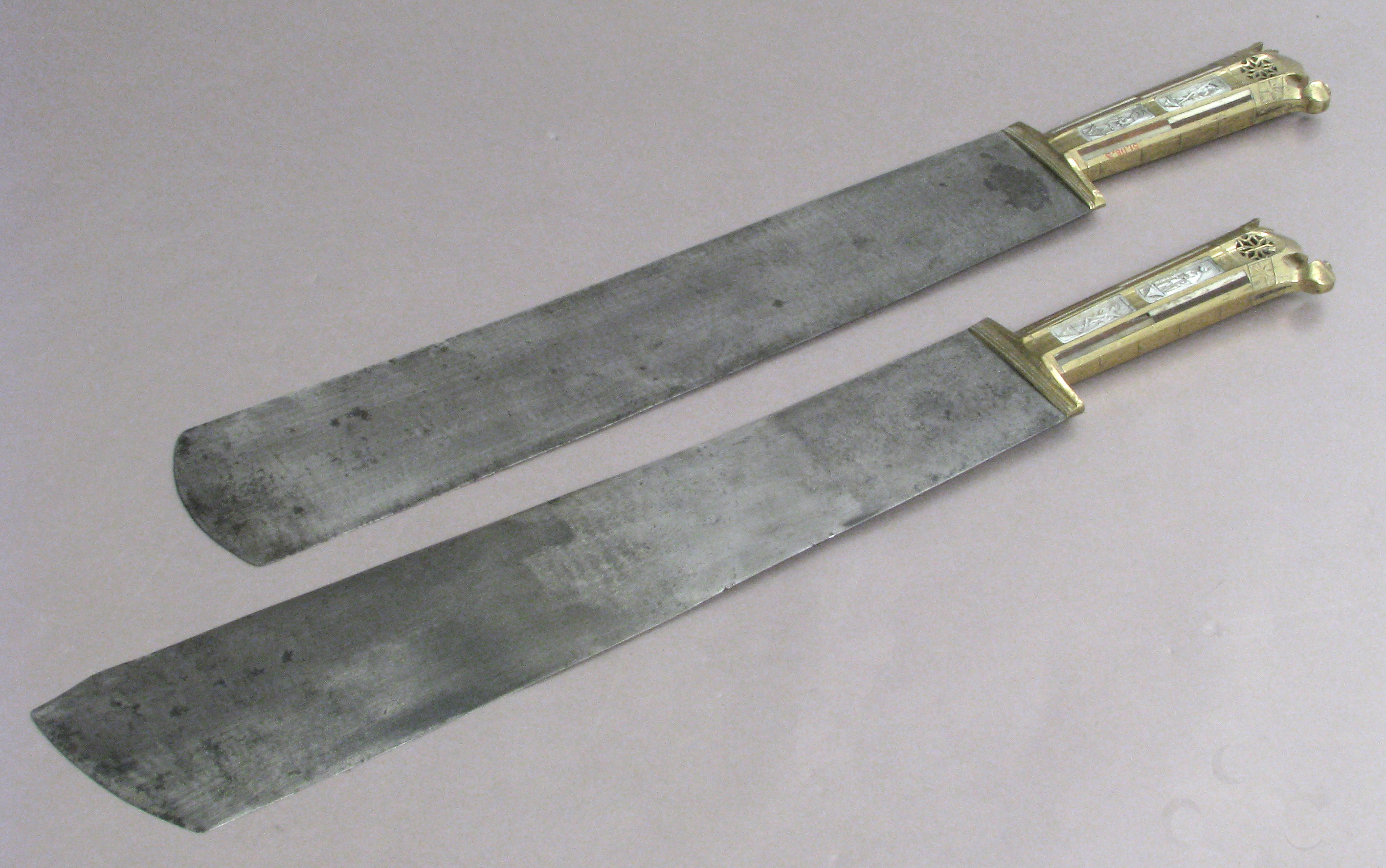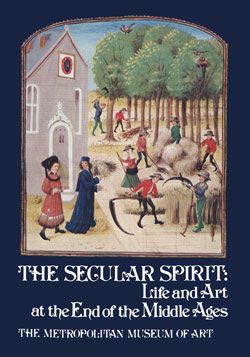Serving Knife
This serving knife, and its pair (see ac. no. 51.118.2), has been attributed to Hans Sumersperger of Hall, the knifesmith of Maximilian I, at whose splendid court the influence of northern late Gothic and Italian Renaissance met. This master’s name appears in the royal accounts of 1492-1498. The brass handles are inlaid with bone, walnut, and carved mother-of-pearl. The steel blades are flat and thinly ground. Although there are no maker’s marks on either the handles or the blades, the style, design, and iconography connect these knives with other works by Sumersperger. Both these knives are related to hunting knife sets of a Burgundian type that became popular after his marriage to Mary of Burgundy. It is possible that these two serving knives (the broad tongue-shaped blade of one has been repaired) were themselves part of a complete hunting set which would have included two single-edged knives of varied size for skinning and cutting, a more delicate table knife and fork, and knives for serving pieces of meat while on the hunt. These knives would have been used either for the hunt or for the banquet. One knife would have been used to slice the meat, the other as a salver to carry the meat to the trencher or plate.
Due to rights restrictions, this image cannot be enlarged, viewed at full screen, or downloaded.
This artwork is meant to be viewed from right to left. Scroll left to view more.






